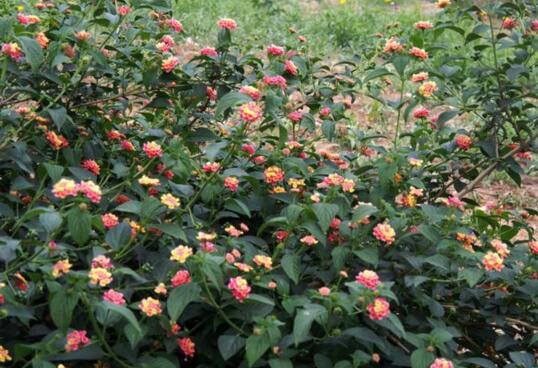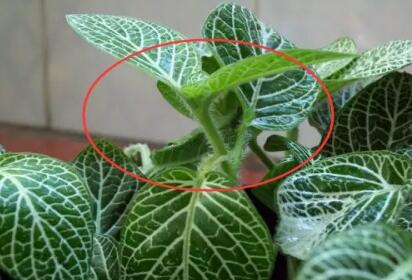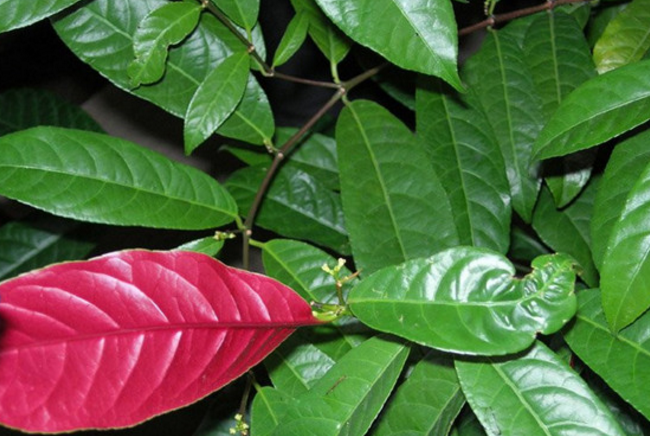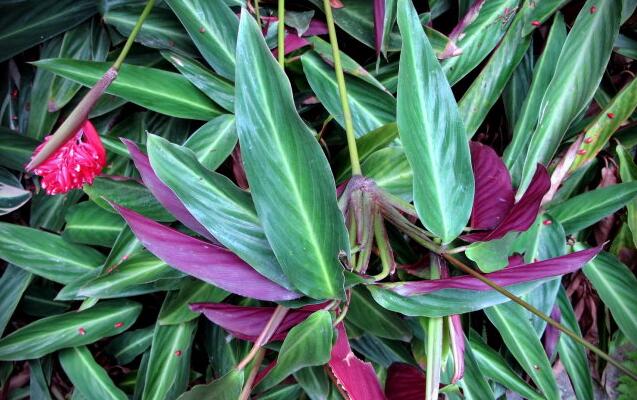Tiger's ear Learn more about Tiger's ear
-
The latest culture methods and matters needing attention of Cymbidium

Tiger's orchid, also known as tiger's ear, tiger's tail orchid, cow tongue orchid and so on, is native to southern Africa. It is a perennial evergreen herb of the genus Amaryllidaceae. Its leaves are evergreen and graceful. When it blossoms, the white flowers are covered with yellow anthers, bright and eye-catching, suitable for indoor use.
2020-11-10 The latest tiger ear orchid of breeding methods and points for attention -
Culture methods and matters needing attention of flower plant Cymbidium

Tiger's orchid, also known as tiger's ear, tiger's tail orchid, cow tongue orchid and so on, is native to southern Africa. It is a perennial evergreen herb of the genus Amaryllidaceae. Its leaves are evergreen all the year round and its posture is graceful. When it blossoms, there are yellow anthers on the top of the white flowers, which are bright and eye-catching. Suitable for indoor potted plant appreciation
2018-09-01 -
Culture methods and matters needing attention of Cymbidium

Culture methods and matters needing attention of Cymbidium
2018-08-15 -
HuRui Cymbidium

Tiger stamens, the outer three petals are narrow and long, the cat's ears do not rewind, just right, holding the petal white background, decorated with rose color blocks, very symmetrical, very bright, forming a strong visual impact. The flower stem is high above the shelf, often one scape double flowers, the flower shape is large, the rare species in the core butterfly. The leaf is oblique, the leaf groove is deep, the leaf width is medium, the width is about 0.8 cm,.
2018-03-04 -
How to raise tiger orchid culture methods and matters needing attention

Cymbidium is a common herb, which was previously produced in Africa and then introduced and planted in China, and now it is widely distributed. Because its tiger ear orchid has a high ornamental value, it attracts a lot of people's breeding. But before breeding, I want to
2020-11-08 Tiger's ear orchid how raise breed method and notice tiger's ear -
How to raise Saxifraga how to cultivate Saxifraga and matters needing attention

Saxifraga is relatively simple to raise, its adaptability is very strong, no matter outdoor or indoor, it is easy to survive, and this plant is hairy, furry, very lovely, like friends can keep a pot on the balcony and other places. How to raise tiger skin with Saxifraga
2020-11-08 Tiger's ear grass how raise breed method and notice tiger's ear -
How to choose the variety of rabbit and how to change it?

The main results are as follows: 1 the most common breeds of meat rabbits in China are New Zealand rabbit, California rabbit, Belgian rabbit and Chinese white rabbit. The basic requirements for meat rabbit breeds are fast growth in the early stage (70 ~ 80 days old body weight should be more than 2.5 kg), high feed efficiency, good meat production performance, and adult weight of about 4 kg. New Zealand rabbit is the most widely raised meat rabbit in the world. It originated in the United States and has three populations: new Zealand white rabbit, New Zealand red rabbit and New Zealand black rabbit. To the new west
2019-01-15 -
Grafting Seedling raising techniques and Management points of Plum Blossom

Plum blossom has been praised by many poets since ancient times. Plum blossom is widely cultivated in the Yangtze River Basin in China, and its planting and application prospect is good. The following editor will show you the propagation and cultivation techniques of plum blossoms for reference.
2018-10-14 -
Key points of fertilization techniques for high-quality planting of banana

1. Suitable planting density. It is suitable to plant 120 to 130 plants per mu, the yield is higher, and the appearance quality of banana is better. 2. Suitable seedling age and planting time. The suitable seedling age is 9-10 leaves, and the planting period is in the middle and late March. In this way, Qilei can be harvested in mid-late October and in January-February of the following year. ...
2018-09-15 -
Introduction to the common propagation methods of begonia in four seasons

The seeds of four seasons begonia are small and have a short life span. If the seeds collected are not sown in time, it will have a great impact on the emergence rate. Generally speaking, Haitong of four Seasons is propagated mainly by sowing and cutting. The editor will briefly introduce these two breeding methods of Haitong of four Seasons to you.
2018-07-01 -
Softwood Cuttage Propagation techniques of North American Holly

At present, there is no big breakthrough in hardwood cuttage of American holly, and the effect is not good when the seedling rate reaches 50%. Softwood cutting is the main means of propagation of most garden plants, and it is also the main way to breed seedlings in foreign countries. Next, let's introduce the propagation techniques of softwood cuttings of North American holly.
2018-10-16 -
Key points of maintenance of Golden Fruit (Milk eggplant)

Milk eggplant (solanumma mm osum), also known as multi-head eggplant, five-finger eggplant, frankincense eggplant, golden fruit, five generations in the same house, belongs to the Solanaceae, perennial small shrub, often used for annual cultivation, native to tropical America. Like warm, moist and sunny environment
2019-01-15 -
Breeding Methods of Ficus Trees--New Techniques of Breeding Ficus Trees

Ficus is an evergreen plant with elegant and huge crown and aerial roots that can form a single tree. It is resistant to shade and sun, moisture and drought. It has many varieties and is easy to shape. It is an excellent tree species for soil and water conservation, urban greening and bonsai production.
2018-08-17 -
How to propagate five-color plum, cutting key points / terminal buds or tender branches of five-color plum can be used.

Five-color plum can not only be cultivated artificially, but also can be planted in the wild. If it is raised at home, it can play the ornamental value of the function of five-color plum. Whether it is open field or potted, the problem of reproduction should be considered when the five-color plum grows to a certain stage.
2018-12-12 -
The main points of planting gold marbles

Gold marbles are also called bottle orchids. Because of their beautiful branches and iron-colored flowers, they bloom pale yellow flowers in April and bear fruits in May, and the fruits turn orange and marble-shaped in October, it can be said that gold marbles integrate fruit, leaves and flowers, and have high economic and garden value.
2018-06-26 -
How to trim the reticulated grass? the reticulated grass is too tall. Pruning methods / coring and shortening

As long as the grass is given a suitable environment, its growth rate is very fast, and this advantage has also become an annoyance to some flower friends, because it grows so crazily that the flowerpots are packed, affecting the beauty of the plant shape to a certain extent and reducing the ornamental value. Pruning is needed to solve this problem.
2018-12-17 -
What are the key points of antler fern cultivation?

It is called a bat fern. It is a perennial epiphytic herb of Polypodiaceae. The leaves diverge at the top and resemble antlers. They like warm, humid and semi-shady environments. It is a typical epiphytic fern. (1)Usually planted in special pots (i.e., holes drilled in the walls of pots)
2019-01-05 -
Is Red-backed Cinnamomum poisonous? grafting breeding method

Red back cinnamon, as its name implies, its leaf back is red, is a kind of plant with high ornamental value, but how many people know about it? Is the total plant poisonous and so on a series of questions, we do not know we are going to find out. Is the red back cinnamon poisonous? Red back cinnamon is poisonous.
2019-01-27 -
Enjoy the bonsai modeling pictures of bamboo and cypress!

The bonsai picture of bamboo and cypress can be seen here. Friends who like it can raise a pot of bamboo and cypress at home. Try to make a beautiful bonsai for it.
2018-11-15 -
It is necessary to find out the cause of the yellowing of purple-backed taro leaves in advance.

Purple back bamboo taro branches and leaves dense growth, plant shape plump, thick leathery, leaf dark green glossy, midrib light color, leaf back blood red, forming a sharp contrast. Spikes, bracts and calyx bright red, petals white. The back is purplish red
2019-01-28
